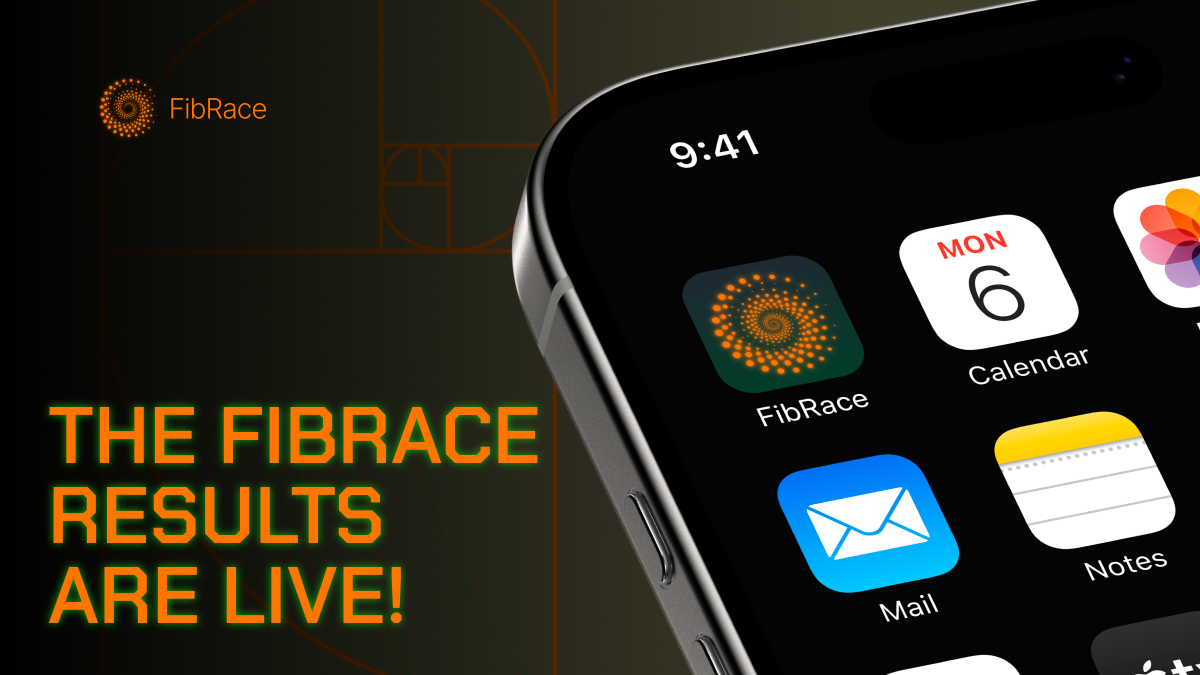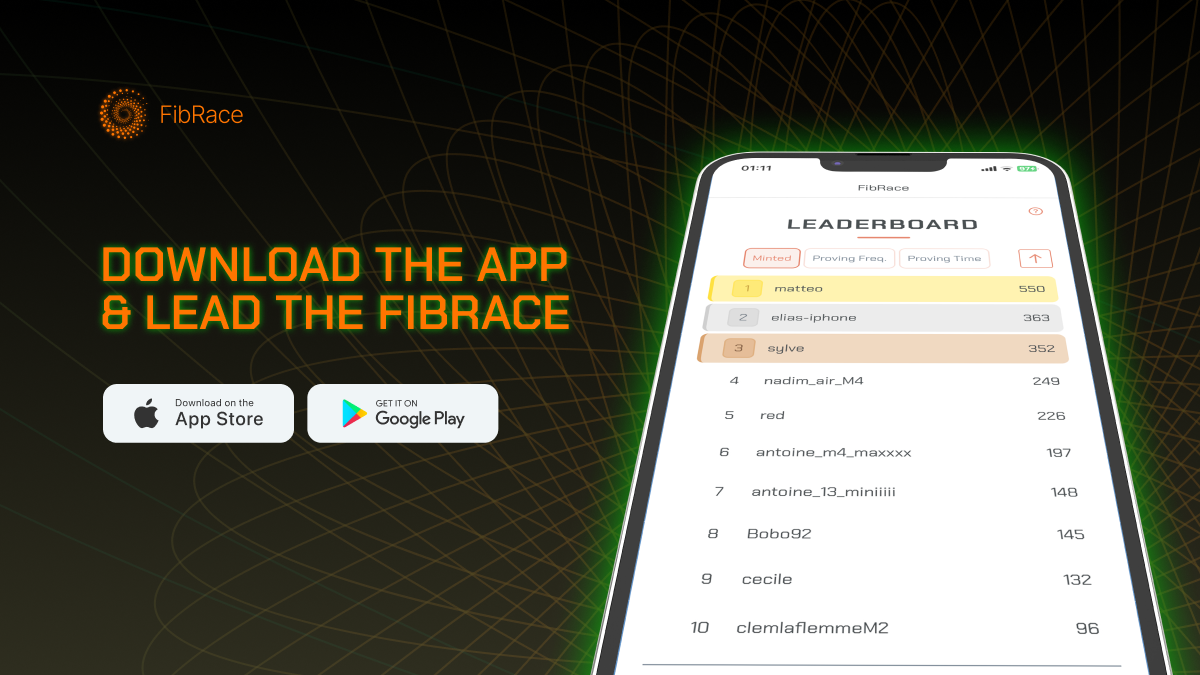FibRace benchmark results are live!
Can we generate proofs directly on consumer devices, at scale, and under real-world conditions? The FibRace benchmark says yes.

In September 2025, we partnered with Kakarot to build FibRace, a fun game… and the first large-scale benchmark of client-side proving on mobile devices.
Client-side proving in real life
Zero-knowledge proofs are a pillar of blockchain scalability and privacy.
In recent years, most progress in proving technology has focused on server-side proving, powering large-scale systems such as Layer 2 rollups and blockchain settlement layers. But this focus leaves a critical gap: client-side proving.
Server-based models work well for throughput, not for privacy. Some use cases, especially those involving personal identity and private data, can only work if proofs are generated locally.
Client-side proving minimizes friction for both developers and users. Developers no longer need to maintain or pay for remote proving infrastructure: computation is delegated to end-user devices. Users gain stronger privacy guarantees: proofs are generated and owned locally, without ever exposing private data to external servers or custodial intermediaries.
Despite the progress in ZK proving systems, client-side proving remains a technical challenge. In March, Vlad, a Hyli grantee, conducted a benchmark on in-browser proving for p256 ECDSA signatures. The conclusion was that client-side proving was still largely impractical, with only Noir achieving limited usability.
To achieve privacy and scalability at a global level, proof generation must be viable on all types of consumer devices, including low-end smartphones. Kakarot’s Cairo M was designed to address this challenge.
FibRace essentials: a reminder
FibRace showcases local proving on mobile devices, offering research-grade performance insights.
This public game engaged a wide audience, measuring proof generation across various devices. Read more about why we built FibRace, how it worked, and what was behind it in our launch post:

The result was the first and largest benchmark of client-side proving on mobile devices.

At a glance:
- 6,047 players
- 99 countries
- 1,420 unique device models
- 2,195,488 proofs generated
- Median proof time: 6.3 seconds
- Minimum RAM for success: 3 GB
Results
Over three weeks, 6,047 players from 99 countries generated, verified, and settled over 2 million proofs on the Hyli network without congestion, even at times where we received over 260k proofs per hour!
Today, we can generate proofs directly on consumer devices at scale and under real-world conditions.
These proofs were generated on 1,420 different device models, all using Cairo M. This wasn’t a simulation or a controlled lab test: it was a real-world snapshot of how people’s phones perform when they generate cryptographic proofs.
Here’s what we learned.
A major milestone for mobile cryptography
The median proving time across all devices was 6.3 seconds.
Top performers, such as high-end Apple and Samsung devices, can generate their proof in under 1.5 seconds, whereas most mid-range devices take between 3 and 10 seconds.
Below 3 GB RAM, proving became unreliable, but these are mostly phones older than 5 years old. Above 6 GB RAM, performance was consistently excellent.
Out of 2.1 million attempts, the crash rate was below 1%, and over 85% of devices completed every proof successfully. Failures were almost entirely tied to memory constraints, not CPU limits, meaning that software improvements will bring more performance gains than new chips on your phones!
That is really good news for builders: today’s smartphones are enough to generate zero-knowledge proofs locally, without needing cloud infrastructure or dedicated hardware.
Hyli can do it all!
Hyli’s blockchain verified millions of proofs without congestion, proving that the network can absorb real-world activity from thousands of devices simultaneously.
That’s a key step toward scalable, user-driven proving, and we’ll keep working in that direction to offer the fastest and most scalable Layer 1 there is.
What this benchmark means for cryptography
FibRace showed that cryptography doesn’t have to live in data centers. It can live on the devices we use every day.
The experiment confirmed that:
- Proofs can be generated entirely client-side without overstraining consumer devices.
- Verification can happen natively onchain, without bottlenecks.
- Developers can start building verifiable experiences that protect privacy by default.
This isn’t just a benchmark. It’s a shift in what’s possible for blockchain and cryptography.
At Hyli, we believe in diversity of proving schemes. We’ve added a native Cairo M verifier to our blockchain, alongside the Risc0, SP1, and Noir verifiers we already had.
We believe that developers shouldn’t have to learn new ways to create their apps; they should be able to use whichever system they prefer on top of what they’re accustomed to building and call it a day. And that’s what we’ll keep offering, because we believe in offering the best possible experience to developers and users alike.
Being able to prove private information client-side from a smartphone is a significant leap forward for the future of cryptographic, verifiable applications, and we’re excited to see what new horizons it will unlock!
Read more
- Read the full results: https://arxiv.org/abs/2510.14693
- Use Cairo M: https://github.com/kkrt-labs/cairo-m/tree/main
- Start building with Hyli: https://docs.hyli.org


